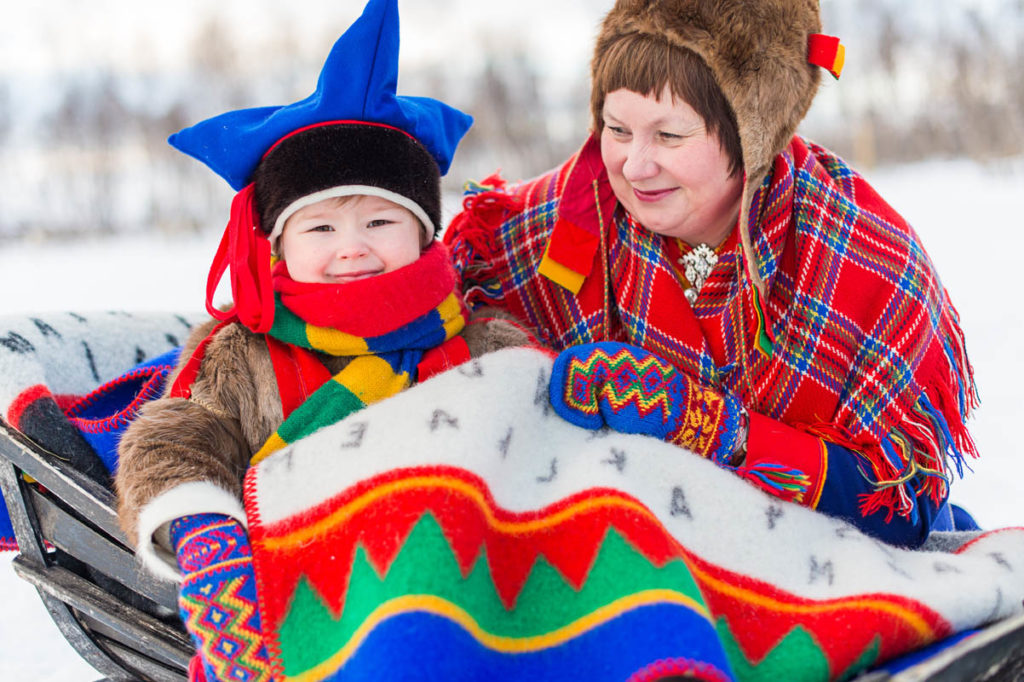The United Nations’ history of intervening in Indigenous Communities within the scope of conflict and indigenous human rights advocacy has extended to all corners of the globe.
On this page you will find information about mental healthcare concerns in the Sámi communities of the Nordic Nations and Kola Peninsula of Russia to showcase some of the issues faced by indigenous populations across the world and the ways in which the UN has intervened or applied UNDRIP to address violations of indigenous peoples human rights.
The Sámi
The Sámi people are experiencing a steady increase in the suicide rates and mental illnesses in the Nordic Nations and the Kola Peninsula of Russia due to the decrease in global climate health affecting their core values and triggering traumas from the Norweganization Periods creating a decline in the mental health of this community.
During a study regarding clinicians’ assumptions about Sámi culture and experience while providing mental health services to Indigenous patients in Norway, the researchers discovered that there are quite a few stigmas existing in both the Sámi and the non-Sámi communities that are dangerous to the indigenous communities seeking and engaging in healing mental health treatments. Some of the most obvious concerns were the aspects of miscommunication–most therapists and psychiatrists did not understand the cultural emphases in Sámi communication describing what their concerns and their trauma contain as well as the way that the patients perceive them. There are numerous cultural misunderstandings between the patient and the clinician and one of the highlights in the study was the concept of “communicating with the dead”. The non-Sámi therapist was primarily concerned about the stability of the indigenous Sámi patient’s mental health whereas a Sámi participant in the study expressed the importance of understanding the depth of “communicating with the dead” in the Sámi community. The clinicians can further understand the representation of the passed person in the patient’s life, the importance of the vulnerability that the patient shares, as well as how that person’s passing affected the patient.
“When the focus is on culture, you don’t get the chance to gain access to the person, the individual patient.” – Non-Sámi therapist participants
One mental health organization is advocating for the healing and strengthening of the indigenous Sámi communities called the Sami Norwegian National Advisory Board on Mental Health and Substance Abuse (SANKS). They are an organization created to integrate the Sami spiritual connections to the environment and cultural tradition into mental health treatment that addresses concerns about global warming head-on through treatments offered such as a therapeutic camping program for families, allowing them to talk and heal over campfires, during fishing trips, on horseback rides, and while creating traditional handicrafts. One of the largest challenges is that this is only available in Norway, so economic and awareness availability might not be as accessible to the Sámi people in Sweden or the Kola Peninsula in Russia.
According to Article 24, Section 2 of the UNDRIP: “Indigenous individuals have an equal right to the enjoyment of the highest attainable standard of physical and mental health” and “ States shall take the necessary steps with a view to achieving progressively the full realization of this right.” This shows that this article was violated and not endorsed in all the cases given. According to Article 29, Section 3 of the UNDRIP “states shall also take effective measures to ensure, as needed, that programmes for monitoring, maintaining and restoring the health of indigenous peoples, as developed and implemented by the peoples affected by such materials, are duly implemented.” However, as stated in the articles mentioned above, not many programs or policies are being implemented to secure the health and population of the Sámi people and are in direct violation.
With this information and results from the studies assessed, the Sámi people experience microaggressions from the oppressive communities resulting in an unwelcome and ambivalent environment lacking complete understanding otherwise to dedicate care for the rising suicide and mental illnesses amongst the Sámi people. The Sámi groups have an interwoven culture, community, and relationship with nature and its purposes spiritually, economically, emotionally, and mentally that need to be supported to ensure the safety and security of the Sámi people and community such as in the Plan for Suicide Prevention Among the Sámi People in Norway, Sweden, and Finland curated by SANKS and the Sámi Council.
__________________________________________________________
Sources
Additional informationFundingThe fieldwork of this study was partly funded by Várdduo (the Centre for Sámi Research, and ReferencesSwedish Ministry of Enterprise Energy and Communications. Sweden’s Minerals Strategy Stockholm. Elanders; 2013. [Google Scholar]Yunis J. “‘If the Reindeer Die, Everything Dies’: The Mental Health of a Sámi Community Exposed to a Mining Project in Swedish Sápmi.” Taylor & Francis, https://www.tandfonline.com/doi/full/10.1080/22423982.2021.1935132.
authors, All, et al. “‘If You Do Not Birget [Manage] Then You Don’t Belong Here’: A Qualitative Focus Group Study on the Cultural Meanings of Suicide among Indigenous Sámi in Arctic Norway.” Taylor & Francis, https://www.tandfonline.com/doi/full/10.1080/22423982.2019.1565861.
Clinicians’ Assumptions about Sami Culture and … – Sage Journals. https://journals.sagepub.com/doi/10.1177/1363461520903123.
Sage Journals: Your Gateway to World-Class Research Journals. https://journals.sagepub.com/.
The Sami Law: A Change of Norwegian Government Policy toward the Sami … http://www3.brandonu.ca/cjns/9.1/Steinlien.pdf.
Schreiber, Melody, et al. “In a Land of Thundering Reindeer, Suicide Stalks the Indigenous Sami.” STAT, 9 Dec. 2016, https://www.statnews.com/2016/12/09/suicide-sweden-sami-mental-health/.
Stoor, Jon Petter A., et al. “‘Mapping Suicide Prevention Initiatives Targeting Indigenous Sámi in Nordic Countries’ – BMC Public Health.” BioMed Central, BioMed Central, 7 Nov. 2021, https://bmcpublichealth.biomedcentral.com/articles/10.1186/s12889-021-12111-x#Sec5.
Suicide Plan En – UAF. https://www.uaf.edu/caps/resources/policy-documents/saami-council-Suicide_plan_EN-2017.pdf.
United Nations Declaration on the Rights of Indigenous Peoples. https://www.un.org/development/desa/indigenouspeoples/wp-content/uploads/sites/19/2019/01/UNDRIP_E_web.pdf.
